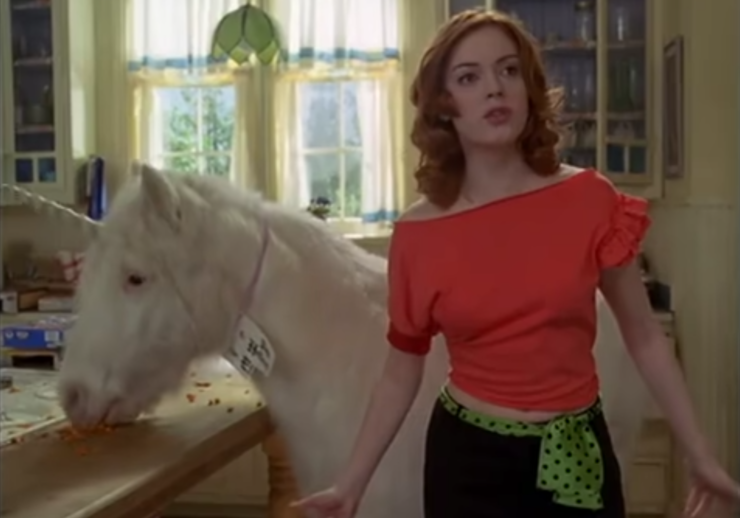If you’ve seen any of the Charmed reboot (which is due to return for a third season in January), you’ll know that while it has some similarities to its predecessor, the setting is different from the original Charmed, which ran from 1998-2006. One of the things I loved most about the original Charmed were the mermaids, dwarves, and fairies from the magical community that the witchy sisters—Piper, Phoebe, Prue and, later, Paige—often encountered and even helped.
Charmed’s magical community is filled with all kinds of creatures from myths and legends who live in magical realms that included the Enchanted Forest, Enchanted Kingdom, and Fairy Tales Fortress. These settings are wonderful worldbuilding details—after all, where else would they live? Certainly not in P3! But as cool as these places are, they’re not as memorable as some of the original show’s standout characters: figures drawn from folklore, Greek mythology, Old Norse legends, and so much more. Here’s a look at five such magical beings and their pre-Charmed origins!
The Unicorn
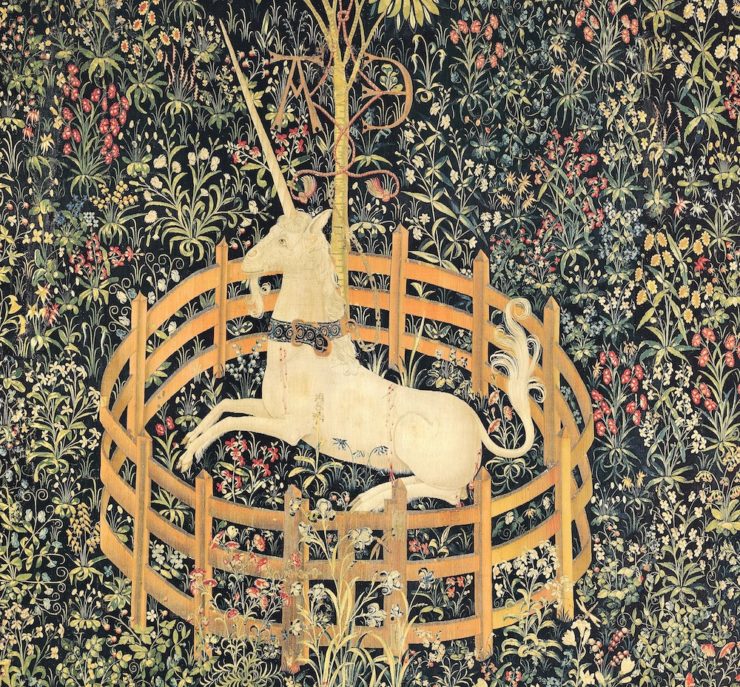
A unicorn first appeared on Charmed in “The Day Magic Died” (season 5, episode 15), as a gift for Piper’s newborn child Wyatt. The unicorn’s horn is a powerful source of all good magic, and its properties range from healing to time travel and beyond. In this episode, Piper’s child is revealed to be a baby boy instead of a girl, and when magic “goes down” the unicorn’s horn dust saves the day.
The mythical unicorn is an ancient creature. Its depiction can be found on gold seals once used for administrative purposes by the Indus Valley civilization around 2,600 B.C.E. Dubbed the “Indus Seals”, the unicorn seal was re-discovered in the late-1920s in modern Pakistan.
According to the American Museum of Natural History’s Mythical Creatures exhibit, the unicorn has appeared in stories around the world for millennia. It wasn’t until the Greek physician Ctesias claimed that their horns were magical around 2,000 BCE that other unicorn descriptions began to follow suit. Though depictions of unicorns vary widely, one commonality between Western and Eastern unicorns is their aversion to people.
The original Charmed’s unicorn shares some attributes with its mythic inspiration. The white unicorn, a color associated with purity in some cultures, is delivered to the Halliwell sisters as a gift. Stuck in the sisters’ kitchen, the unicorn didn’t gallop off for parts unknown—not even after its magical horn was scraped and harvested for “good magic” spells.
Buy the Book
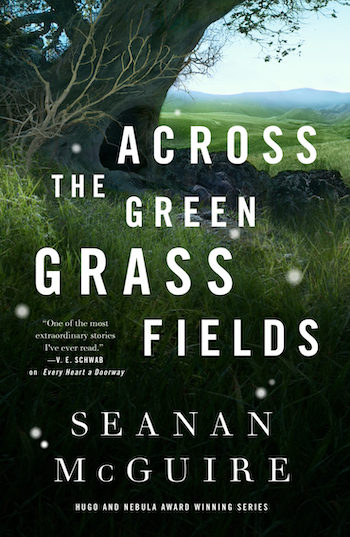

Across the Green Grass Fields
Gnomes
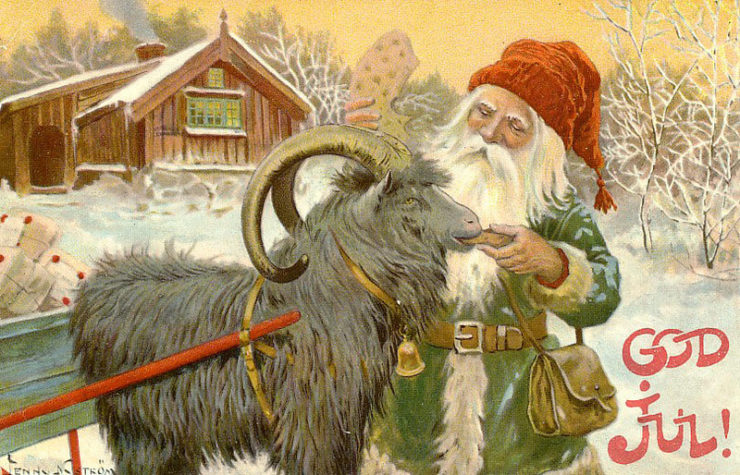
Do you remember Mr. Monkeyshines? If you’re suddenly thinking about the evil stuffed toy with the throat-cutting cymbals, you’re on the wrong track—I’m talking about Charmed’s cranky gnome who taught literature at the magic school. He was the first gnome to appear in the show, in the episode “Charmed Noir” (season 7, episode 8). The professor was short, had a long beard, and wore a tall red cap. Mr. Monkeyshines preferred books to gardening—except for his pronounced issues with the fantasy genre (Booooo!). He also possessed an interesting set of powers: not only could he steal your senses and use them for himself, he could teleport via twinkling lights.
Though stories about magical little people can be found in many different cultures throughout history, the popularization of the gnome can be traced back to the Swiss physician and alchemist Paracelsus, who lived during the Renaissance. In his grimoire, titled A Book on Nymphs, Sylphs, Pygmies, and Salamanders, and on the Other Spirits (1566), Paracelsus claimed that each element was governed by a different magical being: salamanders for fire, sylphs for air, ondines (or mermaids) for water, and pygmies for earth. The reason why we refer to these mythical figures as gnomes today is because Paracelsus used the New Latin term “gnomus” interchangeably with the word “pygmæi” in referring to these elementals. Our modern usage of “gnome” is a French word derived from this New Latin term and taken up in later fairy tales and folklore.
Mr. Monkeyshines is admittedly more akin to a red-hat wearing garden gnome than an earth elemental. (Which, if you know anything about Paracelsus is a good thing!) Interestingly, the image of the gnome’s red hat was originally popularized in the late 1800s by Scandinavian painter and illustrator Jenny Nyström. In the world of Charmed, Mr. Monkeyshines’ sense-stealing powers and magical travel abilities made him a unique character who, sadly, only appeared in this single episode of the show.
Ogres
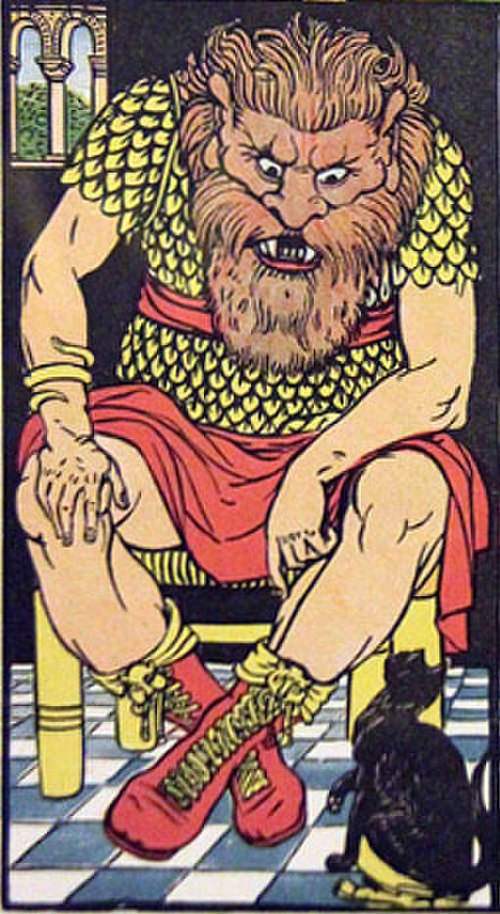
Ogres? GAH! Ogres made their first appearance in “Sword in the City” (season 6, episode 8), in which an ogre is waiting his turn to retrieve Excalibur (Yes, that magical sword!) and winds up getting himself cursed—only to be saved by Paige. Ogres belong to the “good magic” part of the community in the original Charmed. They are tall, supernaturally strong, and can teleport, too. They are also, um, a bit smelly…
Where do ogres come from? Well, turns out that’s a good question. The term “ogre” is French. Its first appearance is believed to be in a 12th-century poem “Perceval, ou Le Conte du Graal” written by Chrétien de Troyes, but wasn’t popularized until the 17th century. Charles Perrault (1628–1703), who wrote Tales of Mother Goose (1697), is credited with establishing the ogre’s popularity as a dark, hulking figure who feasts on human flesh.
Prior to these references, the origin of the ogre and ogress is widely speculated. The ogre’s first mythological appearance may be Etruscan (in the form of the god of the underworld, Orcus), Greek (the river god or king Oiagros, Orpheus’ father), or Hebrew (the biblical giant Og). The ogre’s origins get really muddy when we try to trace them further, with both trolls and orcs bearing some similarities to them. The term “orc” is thought to have come from translations of ogre in French and Italian tales (although of course, Tolkien took the name from the Old English poem Beowulf).
In any case, in the original run of Charmed, ogres represent a reversal from the myths and legends they’re drawn from. Instead of being flesh-hungry giants, they’re misunderstood creatures who are good in spite of their intimidating appearances (and odors), so try not to judge them too harshly!
Fairies
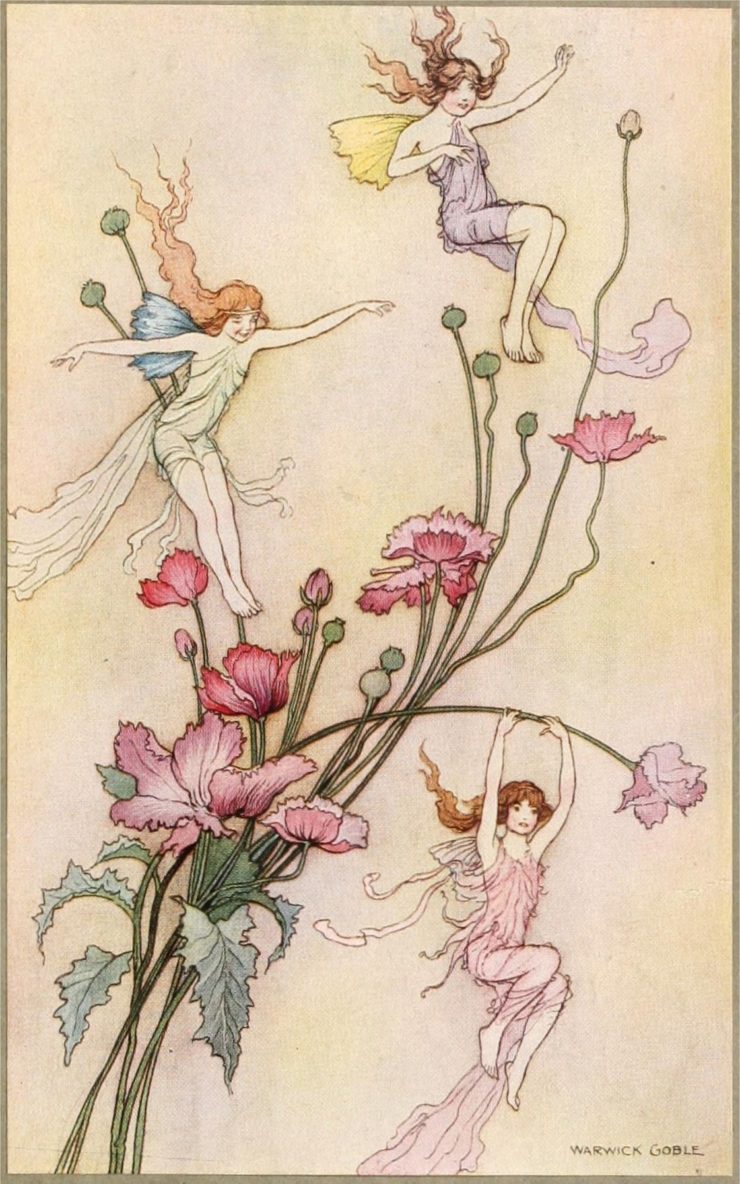
Fairies, who live in the Enchanted Realm, first appear in “Once Upon a Time” (season 3, episode 3) when the Halliwell sisters had to fight off invading trolls and rescue a fairy princess named Thistle. That is, once they’ve been sprinkled with fairy dust so that they can finally see Thistle.
Fairies in the original Charmed are invisible; they’re tied to innocence and children. According to the New World Encyclopedia, “The English word “fairy” is derived from the Old French faerie, which was derivative of the root fae (The English root form is fay).”
In terms of determining an exact starting point for stories about fairies, this is a case where there’s just too much information to draw from. Belief in fairies has changed so much over time! Their prominence in both literature and folklore makes it hard to pin down a single origin for a character like Thistle—especially after the popular impact of Walt Disney’s animated adaptations of stories like Pinocchio (1940) and Peter Pan (1953).
With powers of flight, invisibility, and magical fairy dust, though, there is one fairy that the original Charmed’s fae do resemble more than other fairy tale characters: Tinkerbell from Peter Pan. After all, both Princess Thistle and Tinkerbell share the power of flight and have fairy dust to spare for those who truly want to believe.
Mermaids
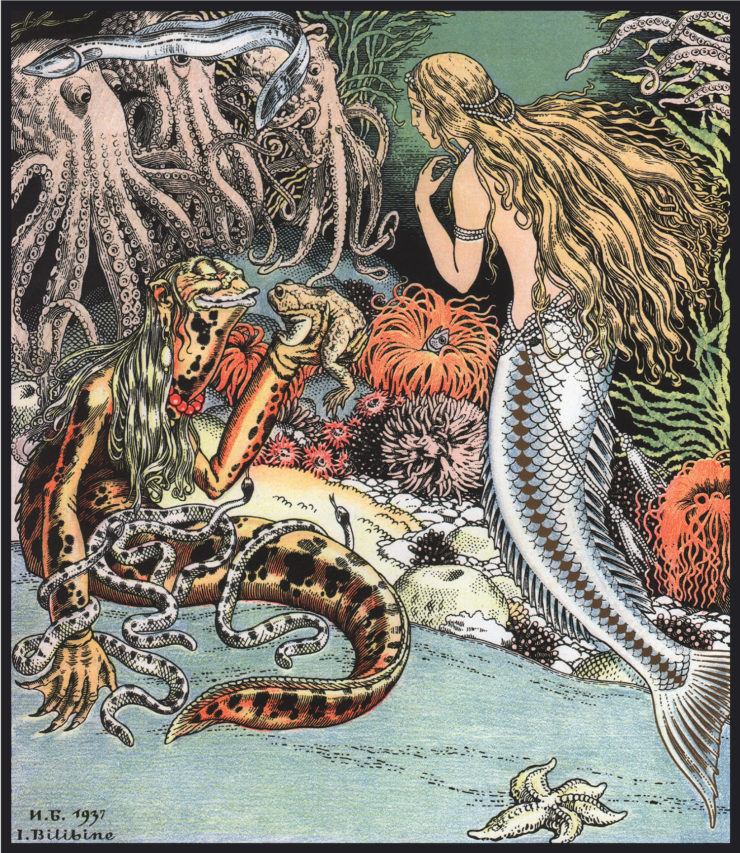
Mermaids first debuted on Charmed in “A Witch’s Tail Part One,” which kicks off season five. The Halliwell sisters have to help a mermaid named Mylie who is in danger of losing her immortality to a terrifying sea hag.
Stories of mermaids and their people, the merfolk, are found throughout the world in multiple myths and legends. Like the unicorn, the mermaid is also quite ancient; the earliest known reference to these beings dates back to an ancient Assyrian story about the goddess, Atargatis, around 1,000 BCE. After accidentally killing her mortal lover, she jumped into a shallow lake and shapeshifted into a fish out of regret; only her bottom half transformed.
Mermaids in the original Charmed share a lot in common with the lovesick young mermaid (“mer” meaning “sea”) from Hans Christen Andersen’s “The Little Mermaid” (1836). Both Mylie and the little mermaid were ready to sacrifice their lives to a powerful witch for love, rather than out of regret, which drove their mythic predecessor, Atargatis.
What about you? Do you have particular favorite creatures or magical beings that featured on Charmed, or any favorite magical origin stories or interesting facts to share? If so, please comment below!
Monica Valentinelli writes about magic, mayhem, and mystery–sometimes all three! You can find out more about her and her work at her website or catch her on Twitter at @booksofm.










